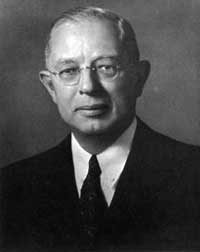Related Research Articles

Northern Rhodesia was a British protectorate in south central Africa, now the independent country of Zambia. It was formed in 1911 by amalgamating the two earlier protectorates of Barotziland-North-Western Rhodesia and North-Eastern Rhodesia. It was initially administered, as were the two earlier protectorates, by the British South Africa Company (BSAC), a chartered company, on behalf of the British Government. From 1924, it was administered by the British Government as a protectorate, under similar conditions to other British-administered protectorates, and the special provisions required when it was administered by BSAC were terminated.

The Cyprus Mines Corporation was an early twentieth century American mining company based in Cyprus. In 1914, Charles G. Gunther began prospecting in the Skouriotissa area after reading in ancient books that the island was rich in copper and noticing promising ancient Roman slag heaps in the area. The company was established in 1916 by Colonel Seeley W. Mudd, his son, Harvey Seeley Mudd, and mining engineer/business partner, Philip Wiseman, whose family, along with the Mudds, were the primary owners of Cyprus Mines until the early 1970s when it was sold to Amoco.

The British South Africa Company was chartered in 1889 following the amalgamation of Cecil Rhodes' Central Search Association and the London-based Exploring Company Ltd, which had originally competed to capitalize on the expected mineral wealth of Mashonaland but united because of common economic interests and to secure British government backing. The company received a Royal Charter modelled on that of the British East India Company. Its first directors included The 2nd Duke of Abercorn, Rhodes himself, and the South African financier Alfred Beit. Rhodes hoped BSAC would promote colonisation and economic exploitation across much of south-central Africa, as part of the "Scramble for Africa". However, his main focus was south of the Zambezi, in Mashonaland and the coastal areas to its east, from which he believed the Portuguese could be removed by payment or force, and in the Transvaal, which he hoped would return to British control.

The Copperbelt is a natural region in Central Africa which sits on the border region between northern Zambia and the southern Democratic Republic of Congo. It is known for copper mining.
A major strike broke out among African mineworkers in the Copperbelt Province of Northern Rhodesia on 29 May 1935 in protest against taxes levied by the British colonial administration. The strike involved three of the province's four major copper mines: those in Mufulira, Nkana and Roan Antelope. Near the latter, six protesters were killed by police and the strike ended. Although it failed, the strike was the first organized industrial agitation in Northern Rhodesia and is viewed by some as the first overt action against colonial rule. It caught the attention of a number of African townsmen, leading to the creation of trade unions and African nationalist politics, and is seen as the birth of African nationalism.

ZCCM Investments Holdings is a successor company to Zambia Consolidated Copper Mines Limited, of Zambia.
Botswana National Airways was an airline based in Gaborone, Botswana.
The mining landscape in Zambia covers production of multiple mineral raw materials, including copper, cobalt, gold, nickel, manganese, emeralds, beryllium, myriad gemstones, sulfur, zinc, coal, iron ore, steel, limestone, uranium and other platinum-group metals. Mining has long been a significant primary sector industry and contributor to the Zambian economy by providing export income, royalty payments and employment.

The history of rail transport in Zambia began at the start of the twentieth century.
Bwana Mkubwa is a settlement and a mine in Copperbelt Province, Zambia. It is the oldest mine in Zambia's Copperbelt region. As a settlement with no municipal status, it became a locale due to the abundant copper deposits found in the area. Today, it is part of Ndola.
The Northern Rhodesian African Mineworkers' Union (A.M.U.) was a trade union in Northern Rhodesia which represented black African miners in the Copperbelt. The AMU was formed in 1949, and campaigned actively to improve working conditions and wages for African miners, as well as opposing racial discrimination in hiring. The union amalgamated with several other mining unions in 1967 to form the Mineworkers' Union of Zambia.
The Northern Rhodesia Mine Workers' Union (NRMU) was a trade union which existed in Northern Rhodesia between 1936 and 1964. It represented blue-collar, European workers in the copper mining industry.
Harold K. Hochschild was the president of the American Metal Company, a conservationist, a philanthropist, and the founder of the Adirondack Museum.

Copperbelt Energy Corporation Plc (CEC) is a Zambian electricity generation, transmission, distribution and supply company with operations in Zambia and Nigeria. The company is listed on the Lusaka Stock Exchange
Timeline of Zambia (Northern Rhodesia)
Chambishi is a town in Kalulushi District in the Copperbelt Province of Zambia. According to the 2021 Census its population stands at slightly above 11,000. It is located on the T3 Road between the cities of Kitwe and Chingola.
American Metal Company was an American nonferrous metal trading and production company.
Selection Trust was a British mining finance house. It was started in 1913 by A. Chester Beatty, a mining engineer from the United States. After the end of the First World War, Beatty built up a substantial portfolio of mining interests, many of them in Africa, but others in Serbia and in Siberia. Initially the company began operations by sharing an office at Number One London Wall in the City of London with the consulting firm of Herbert Hoover, a fellow American mining engineer.

Cyprus Amax Minerals was a major US-based mining company formed in 1993 through the merger of AMAX with the Cyprus Minerals Company. It was one of the world's largest producers of Molybdenum and Lithium and was a leading producer of copper and coal. It also produced iron ore and gold. It was acquired by the Phelps Dodge Corporation in 1999.

Roan Antelope is a copper mine in Zambia. The deposits were discovered in 1902, but their full extent was not understood until 1926. The mine site was developed between 1927 and 1931, at first experiencing many deaths from malaria due to poor drainage. Production since then has experienced various slumps and booms. The mine was nationalized in 1970 and returned to private ownership in 1997. The new owners struggled to make it profitable, and it changed hands twice.
References
- ↑ Berger, Elena L. (1974). Labour, Race and Colonial Rule: The Copperbelt from 1924 to Independence . Oxford Studies in African Affairs. Oxford: Clarendon Press. ISBN 0 19 821690 4 . Retrieved 2013-09-26.
- ↑ "NEW LISTINGS SOUGHT ON STOCK EXCHANGE; American Metal Company Offers Shares to Be Used in South African Deals" (PDF). The New York Times . 17 October 1930. Retrieved 27 January 2020.
- ↑ "Rhodesian Selection Trust" (PDF). The New York Times . 11 October 1960. Retrieved 27 January 2020.
- 1 2 3 "COPPER PRODUCER SHOWS PROFIT DIP; Rhodesian Selection Trust Reports a Slight Decline" (PDF). The New York Times . 23 November 1964. Retrieved 27 January 2020.
- ↑ "Announcement by Chambishi Mines Ltd on 21st May 1962 and comments made to the press on 21st May 1962, by Sir Ronald L. Prain, mimeographed RST documents". Roan Selection Trust Journal.
- ↑ "Chief of Rhodesian Trust Urges Copper Men to Hold Price Line" (PDF). The New York Times . 7 February 1964. Retrieved 27 January 2020.
- ↑ "Company Gets New Name" (PDF). The New York Times . 17 December 1964. Retrieved 27 January 2020.
- 1 2 Hammer, Alexander R. (7 March 1970). "Selection Trust Will Be Subsidiary of Climax Under Zambia Plan" (PDF). The New York Times . Retrieved 27 January 2020.
- ↑ "Cyprus Amax Minerals Company: Private Company Information - Bloomberg". www.bloomberg.com. Retrieved 29 August 2017.
- ↑ "History of Cyprus Amax Minerals Company – FundingUniverse". www.fundinguniverse.com. Retrieved 29 August 2017.